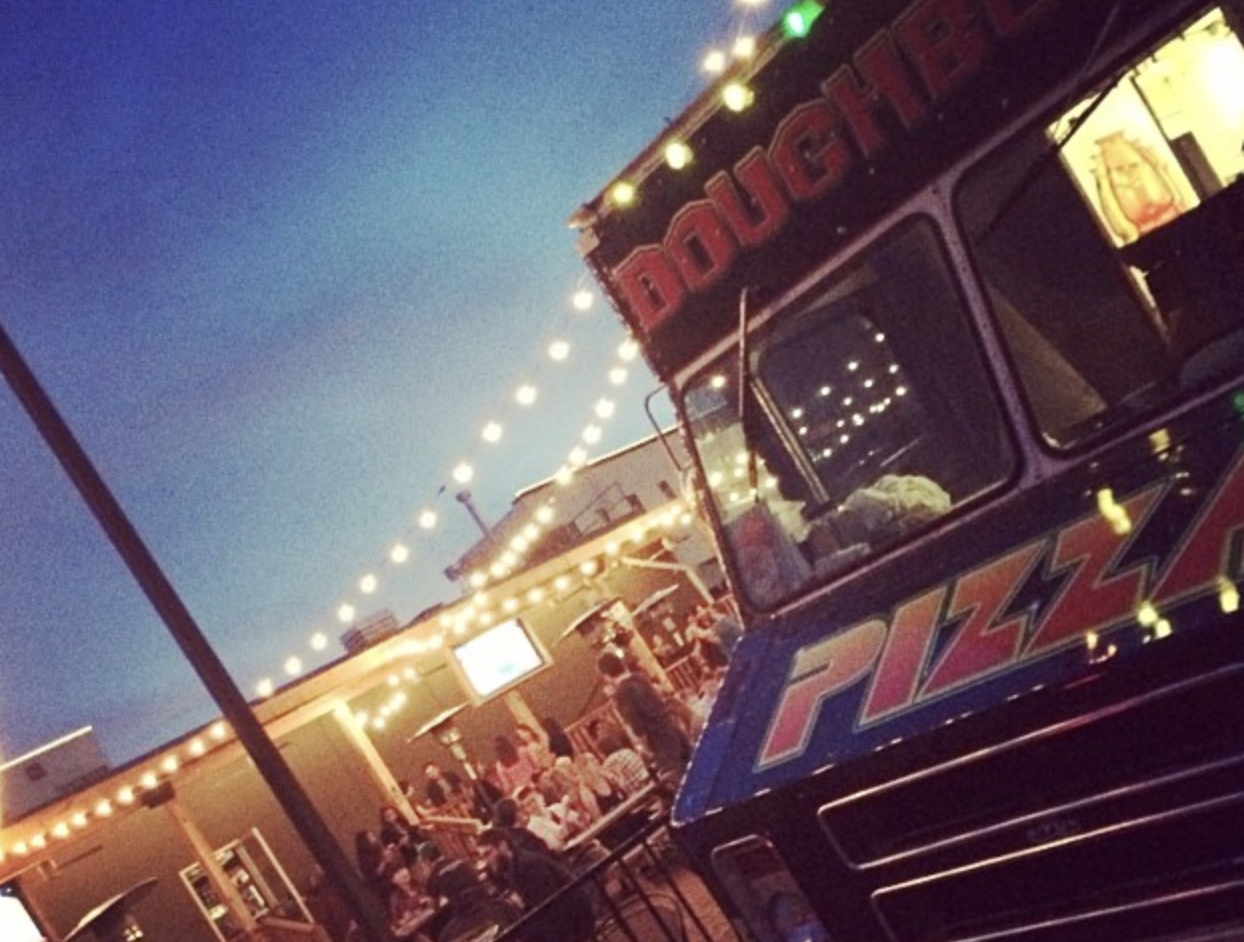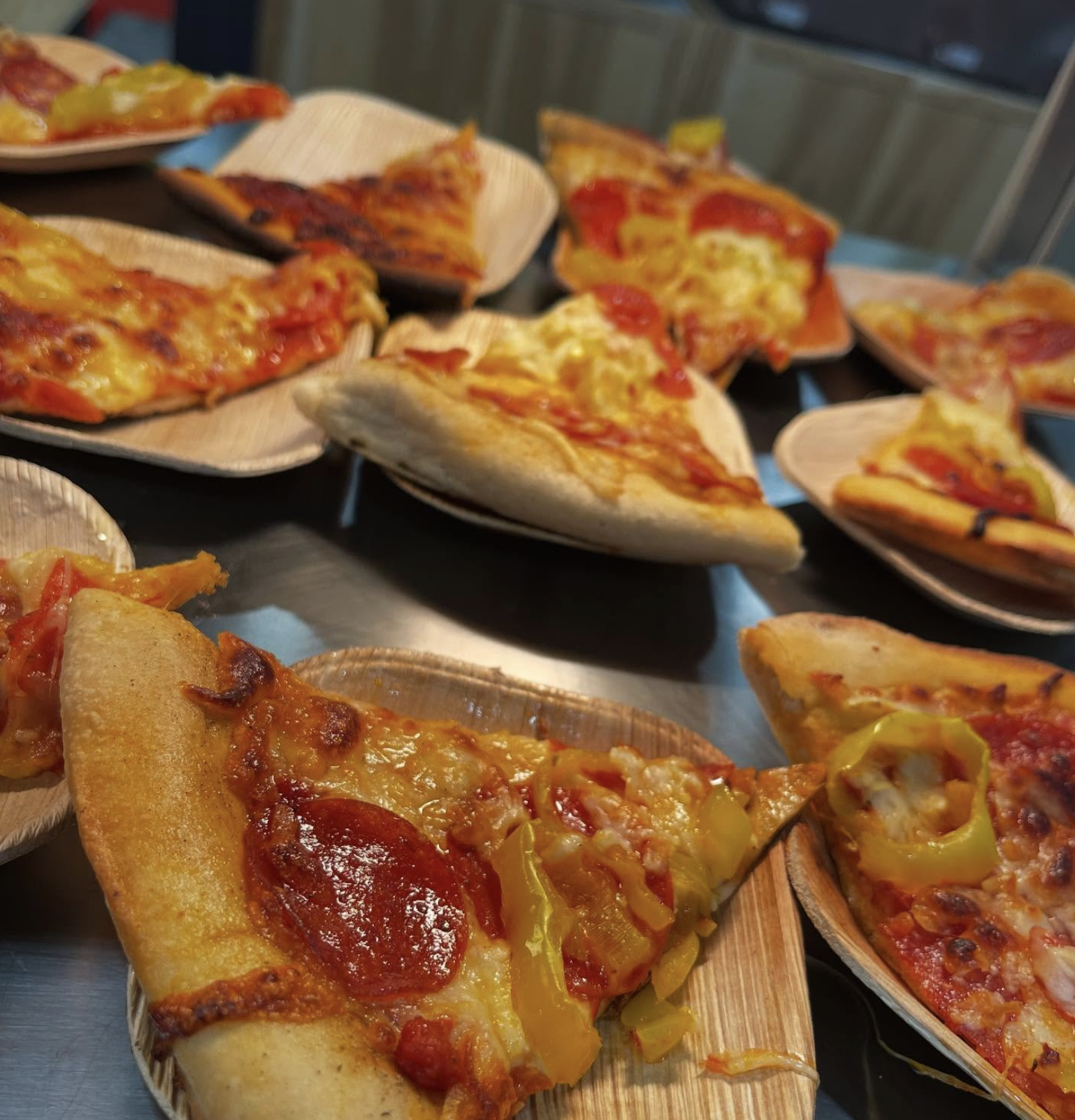Pizza Shop Profit Calculator: Will Your Business Make Money?
Calculate potential profits for your pizza business by entering your pricing, sales volume, and expenses.
How to Use the Pizza Shop Profit Calculator
I built this calculator to help aspiring pizzeria owners or food truck operators evaluate this timeless food business. Whether you're planning to open a pizza shop, a woodfire pizza truck, or a delivery-only operation, this tool provides financial projections based on your specific costs and revenue streams that can help you with the business planning process.
After entering inputs like menu pricing, sales volume, ingredient costs, and expenses, you can copy and save the results. This will help you make data-driven decisions about your pizza business strategy and find out if your menu is going to turn a profit after expenses.
The Reality of Running a Pizza Business
Before diving into the calculator, let's address some realities about the pizza business. While it's one of America's favorite foods with nearly 3 billion pizzas sold annually in the US, there's also a lot of competition.
According to Antioch Pizza Shop, the industry standard for profit margins in pizza restaurants is around 15%. This margin means you'll need to pay careful attention to your costs and pricing strategy to build a longterm business.
This statement from my interview with Mark Williams, co-owner of Dough Boys Pizza Truck, underscores the unpredictability that comes with estimating sales for a pizza business in the early days. Mark and his partners started their gourmet pizza truck after being inspired during a business trip to Texas, where they encountered food trucks serving BBQ and cupcakes.
"You never truly know how many (pizzas) you're going to sell at any event." – Mark Williams, Dough Boys Pizza Truck

Step 1: Enter Business Details
Start by entering basic information about your pizza business.
- Business name (e.g., "Slice of Heaven")
- Business type (full pizzeria, pizza food truck, ghost kitchen, or other custom business type)
The type of business will influence your operating costs and potential sales volume, so be realistic about the scale of your operation and the number of pizzas you'll be able to sell in the first few months of the business.
Step 2: Add Pizza Menu Items
Input your pizza menu items with pricing and sales data:
- Pizza name (e.g., "Classic Margherita")
- Price per pizza
- Number of pizzas sold per month
- Optional: Detailed ingredient costs. This is optional, but highly reccomended if you want the most accurate results for each pizza you sell on the menu.
If you don't add list any ingredient costs in the tool, the calculator will default to a 30% cost based on the price of your pizza. This ensures you take food cost into consideration with the tool even if you don't have the time to conduct all your food cost research right now.
If you're serious about this business, I would document every ingredient used for each menu item. The difference in cost between making a thin crust, Chicago style, meat lovers, pepperoni, or veggie pizzas can be significant.
When estimating sales volume, be conservative and realistic. Mark Williams' advice about unpredictable sales volumes is particularly relevant here. If you're unsure, start with modest projections and adjust as you gather real data and test your concept.
For pricing reference, I found helpful data in an article by Jessica Cantarelli, which mentioned that in 2019, a 16" cheese pizza at an independent pizzeria had a total cost of $11.16 and sold for $16.50, resulting in a profit of $5.34 per pizza (approximately 32.4% profit margin). The prices would be higher these days due to inflation, but the process behind determine pizza cost remains the same.

Step 3: Calculate Labor Costs
Labor is a significant expense in any food business. The calculator offers two ways to project labor cost. After all, you don't want to be making all these pizzas yourself.
- Simple method: Enter a flat labor cost per pizza.
- Detailed method: Calculate based on hourly wage and preparation time.
According to ZipRecruiter, the average hourly salary for a pizza shop employee is $15.24 per hour. When calculating labor costs, remember that Jessica Cantarelli's article noted it takes an average employee 8-10 minutes to make a pizza, which used as the default setting in the "Time to Prepare One Pizza" input.
Step 4: Input Monthly Overhead Expenses
Enter your regular business expenses:
- Rent or lease payments
- Utilities (electricity, water, gas, internet)
- Insurance costs
- Equipment loan payments
- Marketing expenses
- Additional operating costs
These fixed costs will significantly impact your break-even point and overall profitability. Be thorough and realistic with these estimates, as underestimating overhead is a common pitfall for new business owners.

Real Example: Neighborhood Pizzeria
Let's look at a hypothetical but realistic example of a small neighborhood pizzeria:
Slice of Heaven: Neighborhood Pizzeria
Business Details
- Business Type: Full Pizzeria
- Location: Suburban Shopping Center
- Operating Hours: Tuesday-Sunday, 11am-9pm
Pizza Menu (Monthly Sales)
- Cheese Pizza: $16.99 x 800 pizzas = $13,592
- Pepperoni Pizza: $18.99 x 600 pizzas = $11,394
- Specialty Pizza: $22.99 x 400 pizzas = $9,196
Labor Costs
- Average Hourly Wage: $15.00/hour
- Minutes per Pizza: 8 minutes
- Labor Cost per Pizza: $2.00
- Monthly Labor Cost: $3,600
Monthly Overhead Expenses
- Rent: $3,500/month
- Utilities: $1,200/month
- Insurance: $450/month
- Marketing: $800/month
- Equipment Loan: $700/month
- Miscellaneous: $800/month
Calculation Results
Revenue Breakdown
- Total Pizza Revenue: $34,182/month
- Average Price per Pizza: $19.00
- Monthly Sales Volume: 1,800 pizzas
Cost Breakdown
- Ingredient Costs: $9,000/month
- Labor Costs: $3,600/month
- Overhead Expenses: $7,450/month
- Total Costs: $20,050/month
Financial Summary
- Net Profit: $14,132/month
- Profit Margin: 41.3%
- Break-Even Point: 864 pizzas/month
In this example, the pizzeria's profit margin is significantly higher than the industry average of 15% mentioned by Antioch Pizza Shop. This could be due to several factors: efficient operations, premium pricing in their market, lower-than-average rent, or particularly good ingredient sourcing.
The example also demonstrates the importance of sales volume. Selling 1,800 pizzas per month (or about 60 per day) allows this business to comfortably exceed the break-even point of 864 pizzas.
Understanding Pizza Business Profit Margins
Profit margins in the pizza business vary widely. While the industry average hovers around 15%, well-run operations can reach higher margins.
| Business Model | Typical Profit Margin | Key Factors |
|---|---|---|
| Full-Service Pizzeria | 10-20% | Higher overhead, staffing costs, dine-in space. |
| Pizza Food Truck | 20-35% | Lower overhead, limited menu, mobility advantage. |
| Ghost Kitchen/Delivery Only | 15-30% | Low overhead, no dining area, delivery fees. |
| Counter Service/By-the-Slice | 20-40% | Higher markup on slices, lower labor, fast turnover. |
Food cost percentage is another crucial metric for pizzerias. Generally, your food costs should be between 28-32% of your menu price. Going back to the example from Jessica Cantarelli's article, the 16" cheese pizza had an ingredient cost of around $3.91, which is about 23.7% of the $16.50 selling price—a very efficient food cost ratio.
Differentiation: Your Key to Success
With thousands of pizzerias across the country, standing out is essential. As Mark Williams advised during our interview:
"What's different? What's unique? What stands out about your food? Basically that's what you're selling."
Whether it's unique toppings, specialized cooking methods, locally-sourced ingredients, or exceptional service, your differentiator should be factored into your pricing strategy and marketing budget.
How the Pizza Shop Profit Calculator Works
This calculator uses standard business financial modeling techniques to determine the potential profitability of your pizza business. The calculations are based on established accounting principles and industry metrics specific to food service operations.
Core Financial Calculations
| Metric | Formula | Example |
|---|---|---|
| Pizza Revenue | Price per Pizza × Number of Pizzas Sold per Month | $16.99 × 800 = $13,592 |
| Ingredient Costs | Sum of Individual Ingredient Costs × Number of Pizzas Sold | $5.00 × 800 = $4,000 |
| Labor Cost per Pizza | (Hourly Wage ÷ 60) × Minutes per Pizza | ($15.00 ÷ 60) × 8 = $2.00 |
| Total Revenue | Sum of All Pizza Revenues | $13,592 + $11,394 + $9,196 = $34,182 |
| Total Costs | Ingredient Costs + Labor Costs + Overhead Expenses | $9,000 + $3,600 + $7,450 = $20,050 |
| Net Profit | Total Revenue - Total Costs | $34,182 - $20,050 = $14,132 |
| Profit Margin | (Net Profit ÷ Total Revenue) × 100% | ($14,132 ÷ $34,182) × 100% = 41.3% |
| Break-Even Point (Pizzas) | Monthly Fixed Costs ÷ Average Gross Profit per Pizza | $7,450 ÷ $8.63 = 864 pizzas |
Break-Even Analysis
A critical calculation for any pizza business is determining how many pizzas you need to sell to cover your fixed expenses. The formula used in the calculator is:
Where Average Gross Profit per Pizza is the average amount you make on each pizza after accounting for ingredient and labor costs, but before factoring in overhead. For example:
This means you need to sell at least 621 pizzas per month just to cover your fixed expenses. Any sales beyond this point contribute to your profit.

Food Cost Percentage Calculation
Food cost percentage is a key metric for restaurant profitability. The formula used is:
For a cheese pizza example:
This is within the ideal range of 28-32% for pizza restaurants. If your food cost percentage is higher than 32%, you may need to evaluate your ingredient costs, portion sizes, or pricing strategy.
All calculated values are projections based on the inputs you provide. This calculator aims to give you a realistic picture of what's possible with your pizza business, assuming you can execute your business plan effectively and maintain consistent quality and service.
The Bottom Line
Running a pizza business can be profitable and rewarding, but it requires careful planning, operational excellence, and the willingness to put in long hours. As Mark Williams emphasized in our interview, "You have to sacrifice a lot." By using this calculator to understand your potential profits and break-even point, you'll be better equipped to make informed decisions about your pizza business venture.
Remember that while the numbers are important, the quality of your pizza and the experience you provide to customers will ultimately determine your long-term success.
